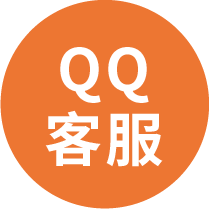VCAM1 Mouse Monoclonal Antibody [Clone ID: 1G11B1]
CAT#: AM26158PU-N
VCAM1 mouse monoclonal antibody, clone 1G11B1, Purified
Need it in bulk or conjugated?
Get a free quote
CN¥ 4,585.00
货期*
5周
规格
Product images

Specifications
| Product Data | |
| Clone Name | 1G11B1 |
| Applications | FN, IF, IHC, IP |
| Recommend Dilution | Immunohistochemistry on Frozen Sections: fixed in acetone, and incubated with mAb at 10µg/ml in PBS/0.1% tween20, starting working dilution is 1/50. Flow Cytometry: 1µg mAb per 1x105 cells. Functional Assays: Stimulated EC were preincubated for 30’ at 37°C with mAb and than used in adhesion assay with T-cells. Immunoflourescence. Immunprecipitation: Precleared EC lysates were immunoprecipitated with mAB and analyzed by 7.5% SDS-PAGE under reducing conditions. Positive Control: Activated endothelial cells. |
| Reactivity | Human |
| Host | Mouse |
| Clonality | Monoclonal |
| Immunogen | Full length protein |
| Specificity | This antibody recognizes vascular Cell Adhesion Molecule-1 (VCAM-1). |
| Formulation | PBS State: Purified State: Liquid 0.2 µm filtered purified antibody solution Stabilizer: 0.1% BSA |
| Concentration | lot specific |
| Conjugation | Unconjugated |
| Storage Condition | Store undiluted at 2-8°C. |
| Gene Name | vascular cell adhesion molecule 1 |
| Database Link | |
| Background | VCAM-1 is a member of the immunoglobulin superfamily of adhesion molecules, which includes ICAMs, PECAM-s and MADCAM, and is involved in leukocyte-endothelial cell interactions. The immunoglobulin superfamily is a type I transmembrane protein characterized by extracellular immunoglobin domains, a transmembrane region and a cytoplasmic tail. They are essential for the development of the embryo and for immune and inflammatory responses. These transmembrane glycoproteins mediate cell interaction with, and adhesion to, other cells and the extracellular matrix. VCAM-1 contains six immunoglobulin domains of the H-type and interacts with VLA-4 expressed on leukocytes. Multiple adhesion molecules play a role in leukocyte recruitment. The process of migration of a leukocyte through the vascular endothelium consists of the following steps: leukocyte-endothelium interaction (first tethering and rolling and than adhesion) and transendothelial migration. VCAM-1 is almost not expressed under physiological conditions. However, under appropriate pro-inflammatory conditions where the endothelium is exposed to inflammatory cytokines such as tumour necrosis factor-α or IL-1b and becomes activated, VCAM-1 gene expression is rapid elevated by the vascular endothelium. There is also a soluble form of VCAM-1 which is angiogenic and chemotactic for endothelial cells. sVCAM-1 is up-regulated in several disease states (eg, myocardial infarction, type 2 diabetes mellitus, primary antiphospholipid syndrome, and rheumatoid arthritis). |
| Synonyms | V-CAM 1, INCAM-100, L1CAM, VCAM-1 |
| Reference Data | |
Documents
| Product Manuals |
| FAQs |
| SDS |
Resources
| 抗体相关资料 |
Customer
Reviews
Loading...


 United States
United States
 Germany
Germany
 Japan
Japan
 United Kingdom
United Kingdom
 China
China
